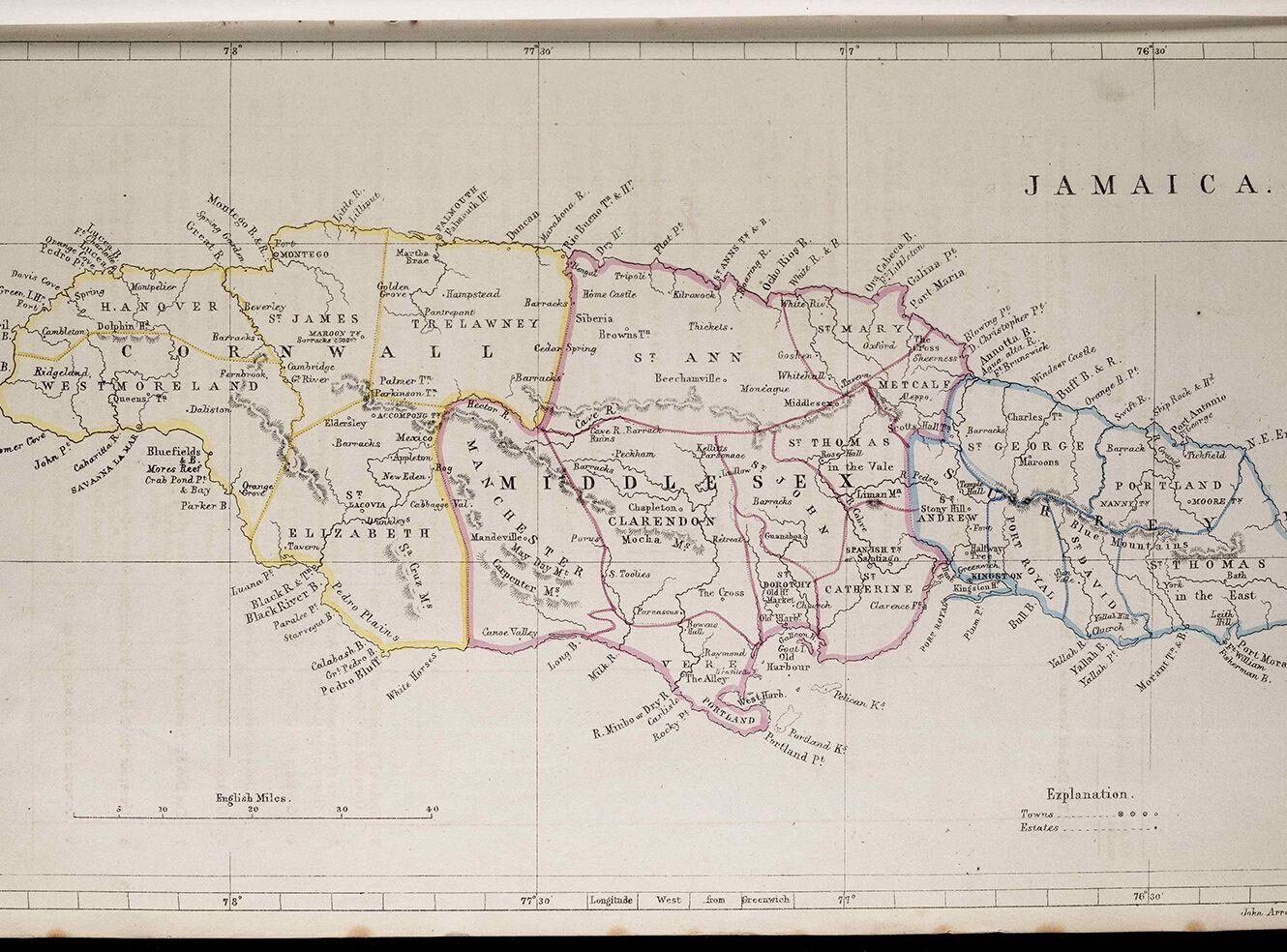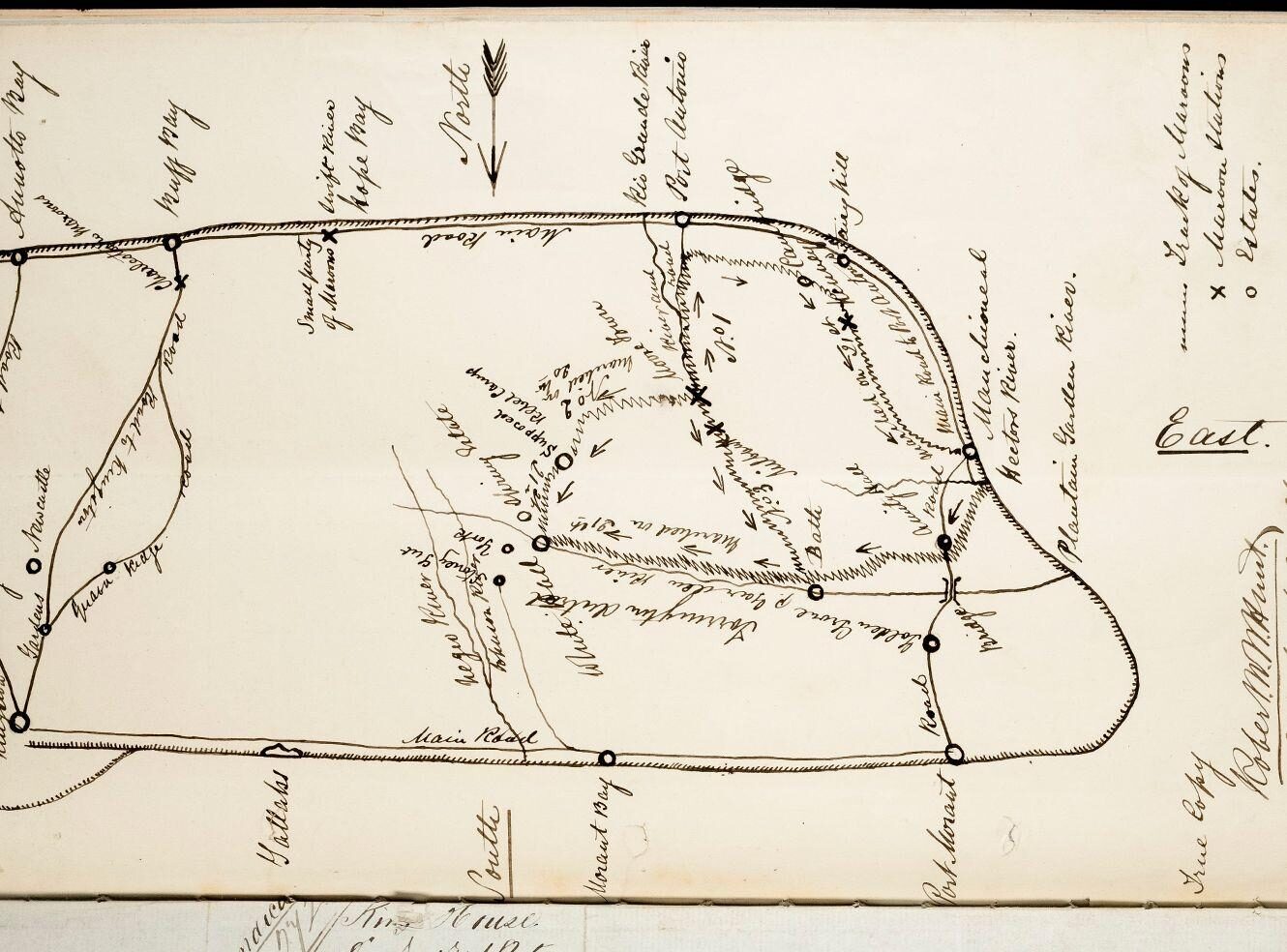Colonial Violence in the Caribbean: The Morant Bay Rebellion and the Royal Commission of Inquiry
In October 1865, another brutal chapter in the history of colonial violence was written in Jamaica. After years of political, economic and racial tensions, as well as epidemics, floods, droughts and economic decline, tensions came to a head when hundreds of Black Jamaicans marched on a local town in protest – an event that came to be known as the Morant Bay Rebellion

Map of Jamaica, CO 318/200. Images including crown copyright images reproduced by courtesy of The National Archives, London, England. www.nationalarchives.gov.uk
While the Apprenticeship scheme (introduced following the abolition of slavery in the Caribbean in an attempt to retain a cheap labour force) was abandoned in 1838, the peasant population and labourers in Jamaica continued to be disproportionately burdened by the economic crises, high taxes and environmental hazards and had little civil or religious freedom from the white elite class. Led by local Native Baptist (a religious group founded by Black refugees from the American Revolution who were politically active), the protestors marched to Morant Bay, raiding the police station and courthouse.
The response from Governor Eyre of Jamaica and the colonial authorities was brutal. The crowds were met with open fire from the militia, causing violence to erupt throughout the town and to spread across the parish of St. Thomas over the following days. Eyre declared Martial Law in the area and commissioned both Jamaican and British forces, as well as Jamaican Maroons, to ‘suppress’ the rebellion, resulting in the indiscriminate deaths and flogging of hundreds of the Black population, regardless of their involvement in the protests. One report from 1866 details the punishment of a man named Marshall who was sentenced to 50 flogs for allegedly breaching military regulation; after 47 flogs, the provost Marshal, in an act of “lawless and wanton barbarity” ordered him to be hung for “gritting his teeth”. By early November over 450 Black Jamaicans had been killed and even more wounded.

Plan for the movements of the Maroons in the Morant Bay Rebellion, CO 137/394. Images including crown copyright images reproduced by courtesy of The National Archives, London, England. www.nationalarchives.gov.uk
Britain was at first sympathetic to Eyre, however, news of the extent of the brutality soon caused widespread controversy and demand for an official inquiry. A Royal Commission of Inquiry was created by Parliament to investigate the allegation that “excessive and unlawful” action had been taken in the Rebellion's suppression. It began in January 1866 and involved interviews with over 700 witnesses over a period of six months. The Reports and Minutes of Evidence from this Inquiry can be found in Colonial Caribbean. The report found that the “punishments inflicted were excessive” and “far greater than the necessity required” and that “the punishment of death was unnecessarily frequent”, however, it failed to condemn Eyre's use of martial law and decisive action. The Governor was nevertheless dismissed from his position and the colony’s assembly was abolished, replaced by a Crown Colony government.
The third module of Colonial Caribbean contains reports, evidence and correspondence that document a series of fierce rebellions and resistance movements throughout the Caribbean in the mid-nineteenth century. Visit Colonial Caribbean to discover more about these and the Morant Bay Rebellion.
For more information about Colonial Caribbean, including free trial access and price enquiries, please email us at info@amdigital.co.uk.
Recent posts

The blog highlights American Committee on Africa, module II's rich documentation of anti-apartheid activism, focusing on the National Peace Accord, global solidarity, and student-led divestment campaigns. It explores the pivotal role of universities, protests, and public education in pressuring institutions to divest from apartheid, shaping global attitudes toward social justice and reform.

This blog examines how primary sources can be used to trace the impact of young voices on society, particularly during pivotal voting reforms in the UK and the US. Explore materials that reveal insights into youth activism, intergenerational gaps, and societal perceptions, highlighting their interdisciplinary value for studying youth culture, activism, and girlhood across history.
